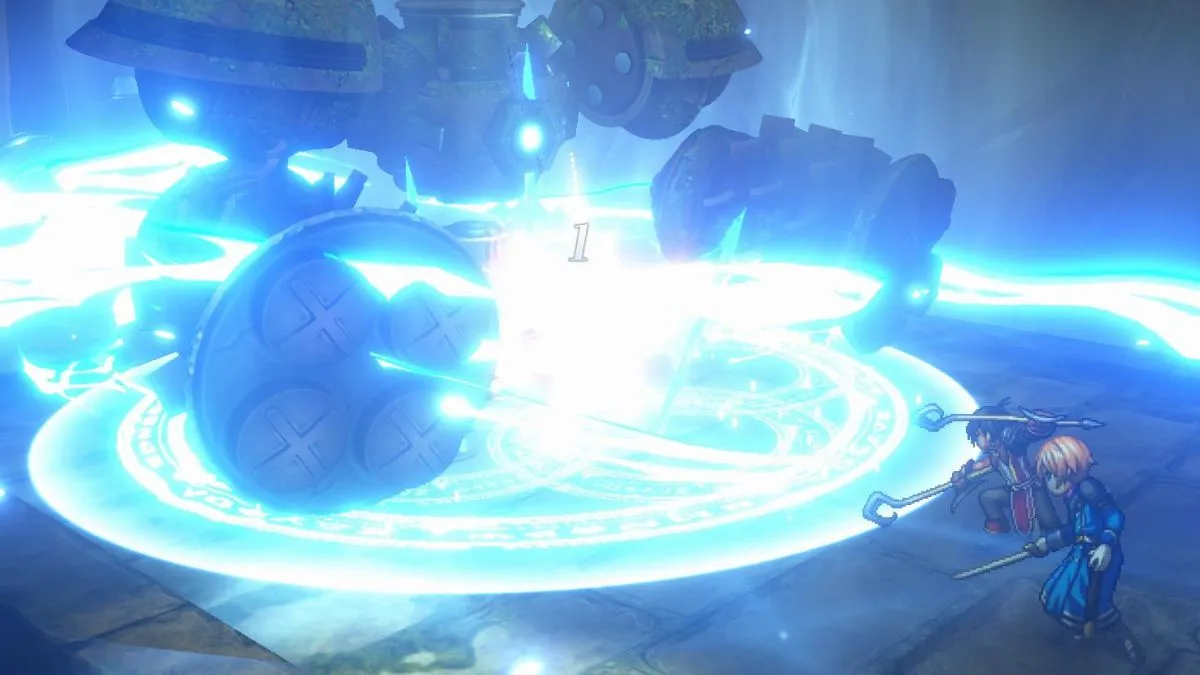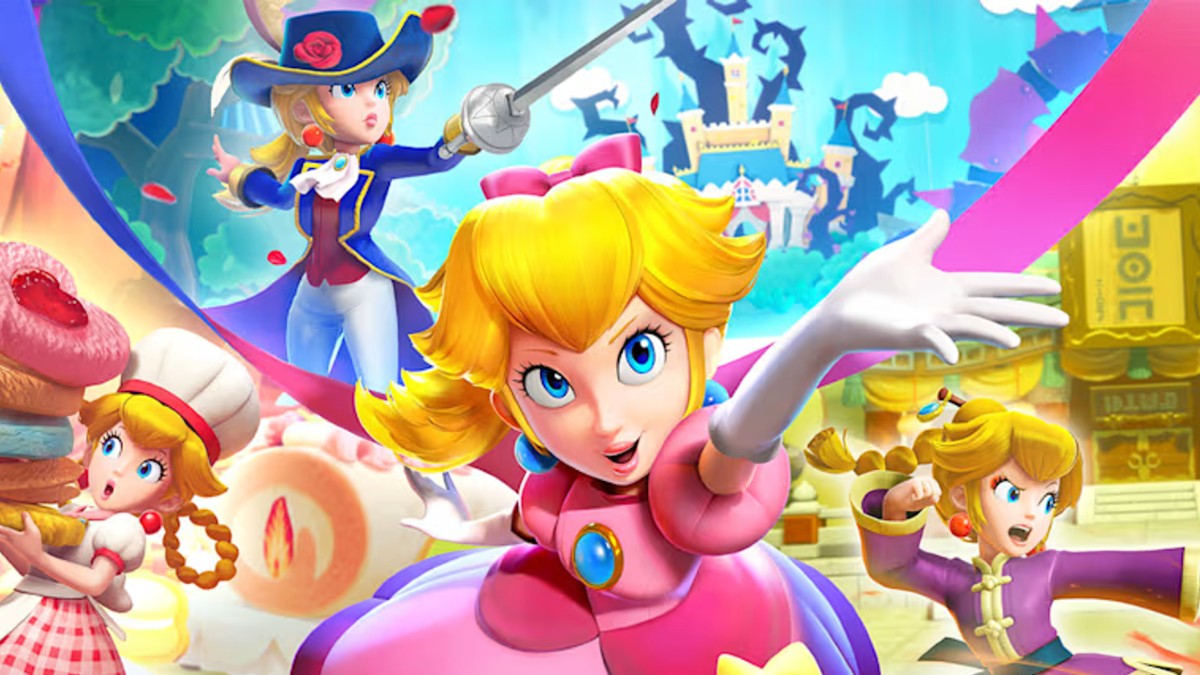Developed by From Software. Published by Sony Computer Entertainment. Released March 24, 2015. Available on PS4. Review copy provided by Publisher.

The Souls series has gained quite a reputation for having some of the most difficult games of the modern era, and while it’s a well-earned reputation, Demon’s Souls, Dark Souls, and Dark Souls 2 are special for much more than just their punishing difficulty. They are exemplary in environmental storytelling, risk vs. reward game mechanics, enemy design, level design, and treating gamers with respect. While it’s not technically a Souls game — though it is helmed by Demon’s Souls and Dark Souls creator, Hidetaka Miyazaki — Bloodborne absolutely lives up to the Souls series’ reputation by delivering on all of those aforementioned fronts, while at the same time packaging it all in a way that will feel simultaneously familiar and foreign to Souls veterans.
Bloodborne opens with your character arriving at a town named Yharnam seeking something known as Paleblood. A doctor tells you that in order to obtain the Paleblood, you’ll need to unravel its mystery, and in order to do that, you’ll first need to get some Yharnam blood in you. Never one to turn down an offer of a sketchy blood transfusion, apparently, you agree, much to the sinister delight of your attending physician.
With the transfusion underway, your vision fades, and that’s when things start to go a little crazy. In your dream, hideous beasts appear from pools of blood in the ground, tiny ghouls emerge from fog and start climbing all over you, and a voice echoes that says ‘Ah, you’ve found yourself a hunter.’
As you awaken you can find a note that says ‘Seek Paleblood to transcend the hunt,’ and that’s really all that you have to go off of in terms of plot. In typical Souls fashion, the rest of the plot is up to you to figure out. It’s entirely possible to miss out on key plot details by failing to find a specific NPC, or missing out on a particular item, or even missing an entire boss fight altogether.
Basically, it’s From Software up to their usual tricks, and if you didn’t like the Souls series style of delivering its story through hidden NPCs and item descriptions, then you’re not going to like it here either. There’s plenty of interesting lore to discover, and I can’t wait to see all of the videos of people digging deep into the game and coming up with their own theories on certain plot threads, but it is a little sad to get to the end of the game and still feel like you don’t have a full grasp of what’s going on in the world.
If you’re coming into Bloodborne as a newcomer to From Software’s “Learn by dying” method of game play instruction, be prepared for a rough ride. Likewise, if you were worried about the developers toning down the difficulty in an effort to make the game more accessible to a wider variety of people, then consider your fears alleviated, because Bloodborne is just as brutal as its spiritual predecessors.
Enemies in Bloodborne are just about the most aggressive enemies you’ll ever encounter in a video game. They’re fast as hell, they flail towards you with combos that seemingly never end, and can close the distance at an alarming rate. If you just wait around trying to find openings to attack like you typically would in Dark Souls, chances are you’re going to get overwhelmed. Shields, for the most part, are gone as well, so your only method of avoiding damage is by being on point with your dodges.
All of this adds up to an incredibly fast paced combat system and Bloodborne is much better for it. It forces players to be aggressive, while still punishing them for being reckless. Combat is still incredibly challenging, and perhaps at moments, even more so than its predecessor. but it’s always fair and always supremely satisfying.
One big departure from the Souls series is the fact that you’ll find a lot less meaningful loot, especially in the way of weapons. While the Souls games had a massive assortment of short swords, long swords, halberds, spears, axes, katanas, hammers, etc. Bloodborne’s selection of weapons is comparatively small. But what it lacks in quantity, it certainly makes up for in quality and originality.
Bloodborne utilizes what are known as “Trick Weapons,” each of which are two weapons in one. The Threaded Cane, for example, in it’s base form is little more than a simple short sword capable of dishing out damage with quick slashes and thrusts from short range. Transform it though and it becomes a whip sword with a move set that can not only hit enemies from far away, but can also do a massive sweep attack that will wipe out crowds of weak enemies.
Personally, I like the smaller and more distinct selection of weaponry in Bloodborne. It’s a game that encourages players to find a weapon that they like and stick with it, so it doesn’t really make sense within the design of the game to keep on showering players with weapons they’ll never use, as the Souls series typically did.
Bloodborne also thankfully simplifies the weapon upgrade system by sticking to one type of upgrade material and allowing players to customize their weapons further by slotting in Blood Gems to grant them random bonuses like extra damage, poison damage, or extra scaling on a particular stat.
Killing hideous monstrosities isn’t all you’ll be doing in Bloodborne; you’ll also be exploring one of the most unforgettable game worlds in recent memory. On a visual level alone, Bloodborne‘s world is astounding. From the dreary streets of Yharnam to the haunting halls of Cainhurst Castle, every area of Bloodborne is positively dripping with atmosphere and a sense of mystery. But even better is the sense that everything is interconnected. It’s a very cool feeling to fight your way through forests, swamps, and underground tunnels, and then all of a sudden find yourself back in Yharnam on the other side of a gate that you wondered how you’d be able to open back at the start of the game. Bloodborne is filled with moments like this.

In order to fast travel from area to area, players must first light a lamp, which essentially serves as a replacement for bonfires from Dark Souls. Once a lamp is lit, it can be used to teleport back to the Hunters’ Dream, which serves as the hub world. At Hunters’ Dream, players can use their collected Blood Echoes (Souls) to level up their stats, purchase items and weapons, upgrade their own weapons, and then teleport back to one of the areas with a lit lamp.
It’s also worth noting that while lamps share many of the same characteristics as Bonfires, they do not restore a player’s health, healing items, or cause all of the enemies in an area to respawn. The main healing item in the game is a blood vial, which can be found off of most enemies in the early goings of the game, but quickly become scarce as the game goes on.
And this brings me to my main problem with Bloodborne, which is actually several small problems, which on their own are merely nitpicks, but when compounded all together make for a pretty substantial issue.
First off, let’s get it out of the way, the load times are really bad. Dying will have you staring at the Bloodborne logo for about 40 seconds, and considering how often you’ll die in this game, that’s a lot of game time spent staring at a logo.

Then you have to consider the fact that you’ll likely have to be doing a lot of farming for Blood Vials and Quicksilver Bullets, because they’re ridiculously overpriced at the shop. So that’s even more constant loading going from whatever area you’re currently in, back to the Hunter’s Dream, and then over to your farming location, because you can’t just teleport from one light to another without first returning to the hub.
Add on to that the fact that you can’t respawn enemies by simply interacting with a lamp, and you can see how farming in Bloodborne can quickly become a pretty miserable, but necessary exercise.
Perhaps it wouldn’t be so bad if the loading screen had item descriptions like prior Souls games did, and maybe From Software will patch in a fix down the line, but for now, the fact remains that of the 35 hours I spent beating the game, a very large percentage of that time was spent studying the intricacies of the Bloodborne logo.
Thirty-five hours may seem like a shorter run time than usual for a game that’s so deeply rooted in the Souls series, but that doesn’t even cover the never ending well of content that is the Chalice Dungeons.
Chalice Dungeons are special dungeons that can be accessed by completing a Chalice Ritual on one of the various tombstones at Hunter’s Dream. The first Chalice Dungeon you create for each chalice will be the same base dungeon that everyone will also play through. Players must fight their way through the dungeon, flip a switch to open the exit door, fight a unique Chalice Dungeon specific boss, and then move on to the next floor.
Once you beat that first dungeon, you then get the ability to perform Root and Central Chalice Rituals. A Root Chalice Dungeon will be completely procedurally generated every time you enter it. Different enemies, different loot, different bosses, different layouts, etc. A Central Chalice Dungeon on the other hand will only be randomize the first time you play it. Making it possible to share with friends if it happens to generate an awesome dungeon with great loot.
There are a total of four chalices and each one offers a different experience with their dungeons. Unfortunately, I only managed to find two of them and was only able to procure the materials to make a ritual with one of them. The one that I played was a ton of fun though and I can’t wait to try out the others once I find them.
Of course, in addition to the Chalice Dungeons, hardcore fans can also continue on with their game in New Game+ to start over with harder enemies and all of your items, stats and weapons carried over. And finally, the infamous invasion PVP and Coop systems have been adapted from the Souls series and function basically in the same way, only using bells instead of summon signs in order to summon people into your world. Needless to say, there are a ton of reasons to come back to Bloodborne well after completing the game.
All things considered, Bloodborne is an absolute must-buy for fans of the Souls series and for fans of games that push a player’s skill to the absolute limit. It’s easily the best PS4 exclusive title yet, a game that’s more than worthy to be considered a part of the fantastic Souls series, and it’s one of the best games of 2015 thus far.
Bottom Line: While the load times are a pretty big bummer, it doesn’t change the fact that Bloodborne‘s combat is sublime, its challenge is second to none, and its world is unforgettable.
Recommendation: Bloodborne, like the rest of the Souls games, isn’t going to be for everyone. But, if you’re the patient sort and are willing to put in the time and effort to get good at Bloodborne‘s complex and punishing combat, you’ll find Bloodborne nearly impossible to put down.
[rating=4.5]


